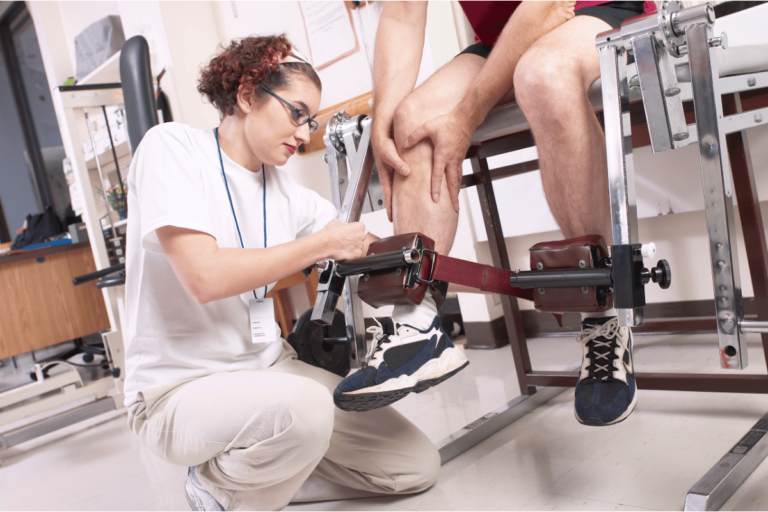Controversy Surrounding Wearable Weights: Benefits and Risks
When using wearable weights, you must consider the benefits against the risks. Ankle weights can strain muscles and cause imbalance, while wrist weights enhance arm exercises and boost intensity. Weighted vests may stress the spine but aid bone health. Leg lifts with added weights intensify workouts. To stay safe, guarantee proper weight distribution and consult a fitness expert. Start light and progress gradually. Keep in mind the impact on your body's strength and safety. More insights on maximizing the benefits and minimizing risks of wearable weights await.
Key Takeaways
- Ankle weights can strain muscles and lead to imbalance.
- Wrist weights improve arm strength, grip, and stability.
- Weighted vests benefit bone health but may strain the spine.
- Side-lying leg lifts with weights enhance muscle workout.
- Safety, gradual progression, and expert guidance are crucial for wearable weight use.
Risks of Ankle Weights
When contemplating the use of ankle weights, it's important to understand the potential risks associated with their application to your workout routine. While ankle weights can increase the load on your leg and hip muscles during exercises like leg lifts, they also pose risks of potential injuries such as muscle imbalance.
Using ankle weights during activities like walking or aerobics can lead to muscle imbalance, which in turn may result in joint injuries. These weights can strain tendons and ligaments in the knees, hips, and back, making it essential to use them cautiously and possibly under the guidance of a fitness professional to avoid such injuries.
Remember to prioritize safety and proper form when incorporating ankle weights into your fitness regimen.
Benefits of Wrist Weights
Utilizing wrist weights can offer added resistance to your arm and shoulder exercises, enhancing the intensity and effectiveness of your workouts. These weights are particularly beneficial for improving grip strength during exercises where gripping a dumbbell may be challenging.
Additionally, wrist weights can aid in shoulder stability exercises, helping you strengthen these essential muscles. For individuals with conditions like arthritis or stroke that result in a weak grip, wrist weights can be especially helpful in building strength.
However, it's important to be cautious as wrist weights can pose risks of tendon injuries in the wrists, elbows, shoulders, and neck, especially during cardio workouts. When used correctly and with proper guidance, wrist weights can be a valuable addition to your fitness routine.
Concerns With Weighted Vests
Before integrating weighted vests into your fitness routine, it's important to be mindful of the potential concerns associated with their use. One major concern is the risk of spine pressure. When wearing a weighted vest that exceeds 10% of your body weight, it can put excessive pressure on your spine, potentially leading to discomfort or injury.
Additionally, while weighted vests can stimulate bone cell growth and benefit bone health, they may not be suitable for individuals with existing back or neck issues. It's vital to confirm that the weight is distributed evenly to prevent unnecessary strain on your spine.
Before using a weighted vest, consult with a healthcare professional to assess whether it's appropriate for you, especially if you have concerns about spine pressure or bone health.
Side-Lying Leg Lift With Weights
To enhance your leg and hip muscle workout, consider incorporating wearable weights into your side-lying leg lift routine for added resistance and strength-building benefits.
When using wearable weights for side-lying leg lifts, essential weight placement is vital. Secure the weights comfortably around your ankles to increase the load on your leg and hip muscles effectively. This added resistance engages your muscles more intensely, leading to greater strength gains over time. Make sure that the weights don't interfere with your form or cause strain on your joints.
Best Practices for Using Wearable Weights
When incorporating wearable weights into your fitness routine, it is important to prioritize safety and proper form to maximize the benefits and minimize the risks associated with these training tools. Safety precautions and proper form are vital to prevent injuries and guarantee effective workouts. When selecting weights, start light and gradually increase to avoid straining muscles. Progression strategies should be gradual and guided by a fitness professional. Here is a table summarizing the best practices for using wearable weights:
| Best Practices for Using Wearable Weights |
|---|
| Safety Precautions |
| – Consult a doctor before starting |
| – Use proper form during exercises |
| Weight Selection |
| – Start with light weights |
| – Gradually increase weight |
| Progression Strategies |
| – Increase weight incrementally |
| – Seek guidance from a fitness expert |
Conclusion
To sum up, wearable weights can be a valuable addition to your fitness routine, but they come with both benefits and risks. Remember to consult with a healthcare professional before incorporating them into your workouts.
Take it slow and gradually increase weights to avoid muscle imbalances and joint injuries. Just like a double-edged sword, wearable weights can enhance your strength training, but must be used cautiously to prevent potential harm.
Stay informed and exercise safely for best results.







